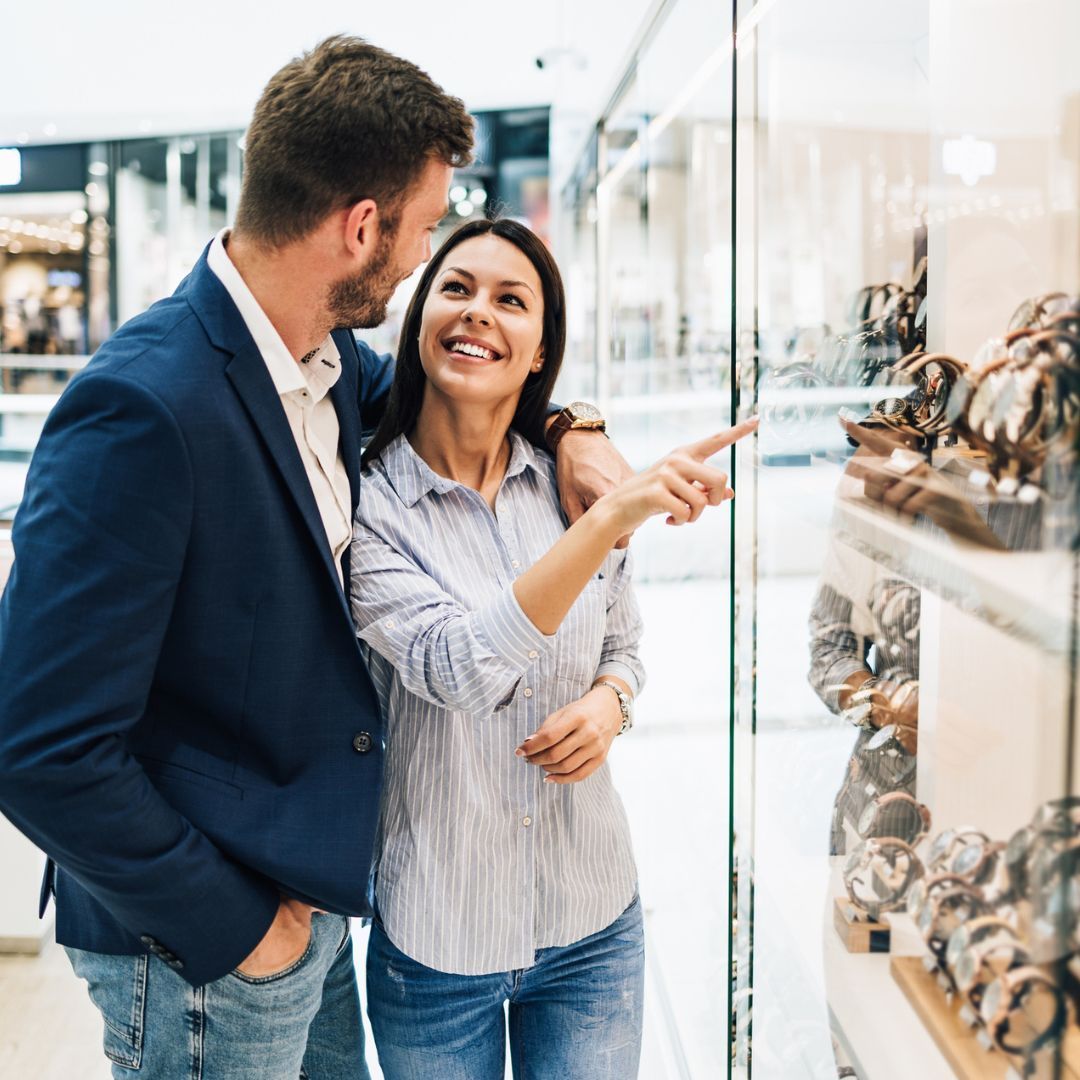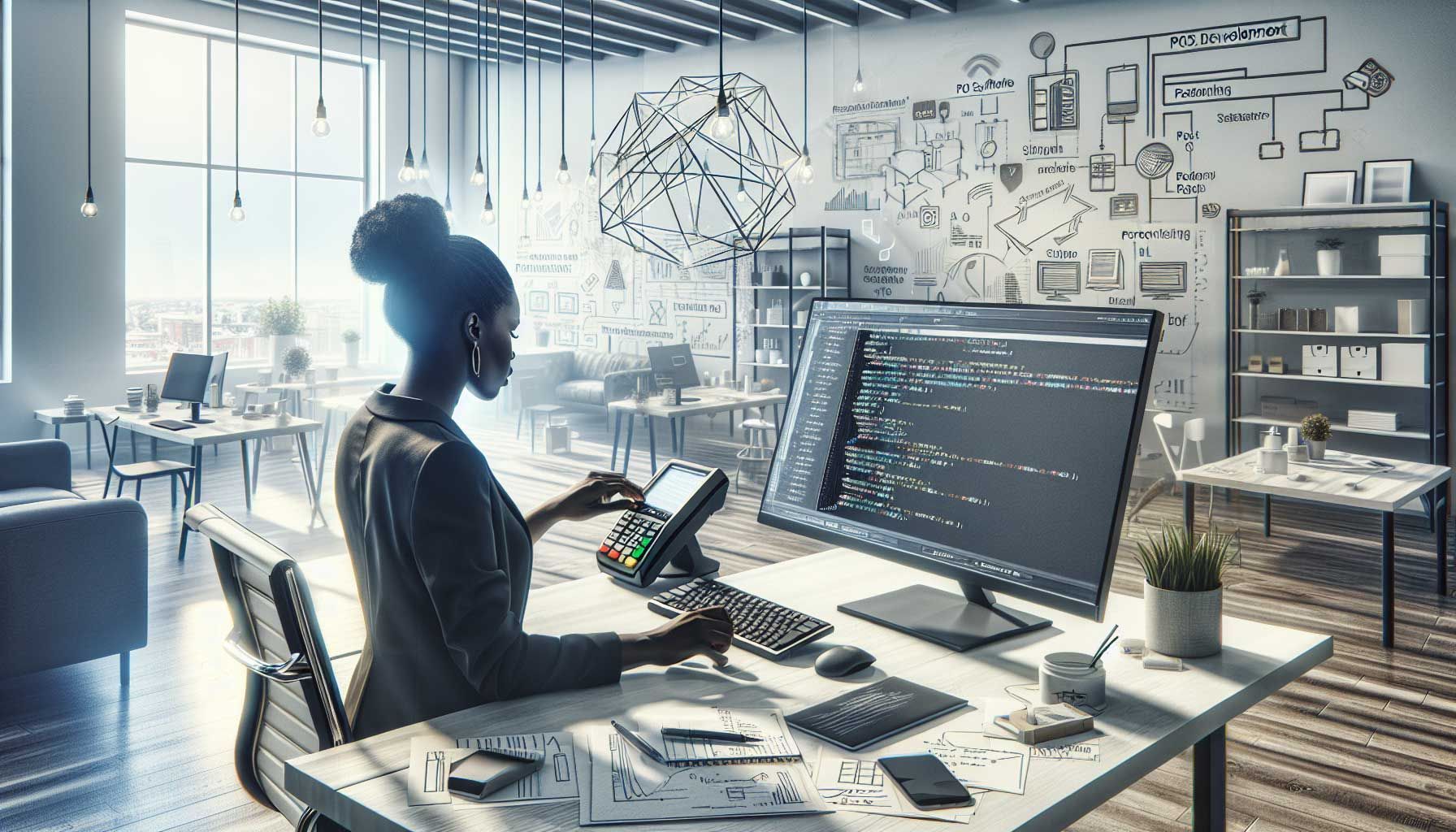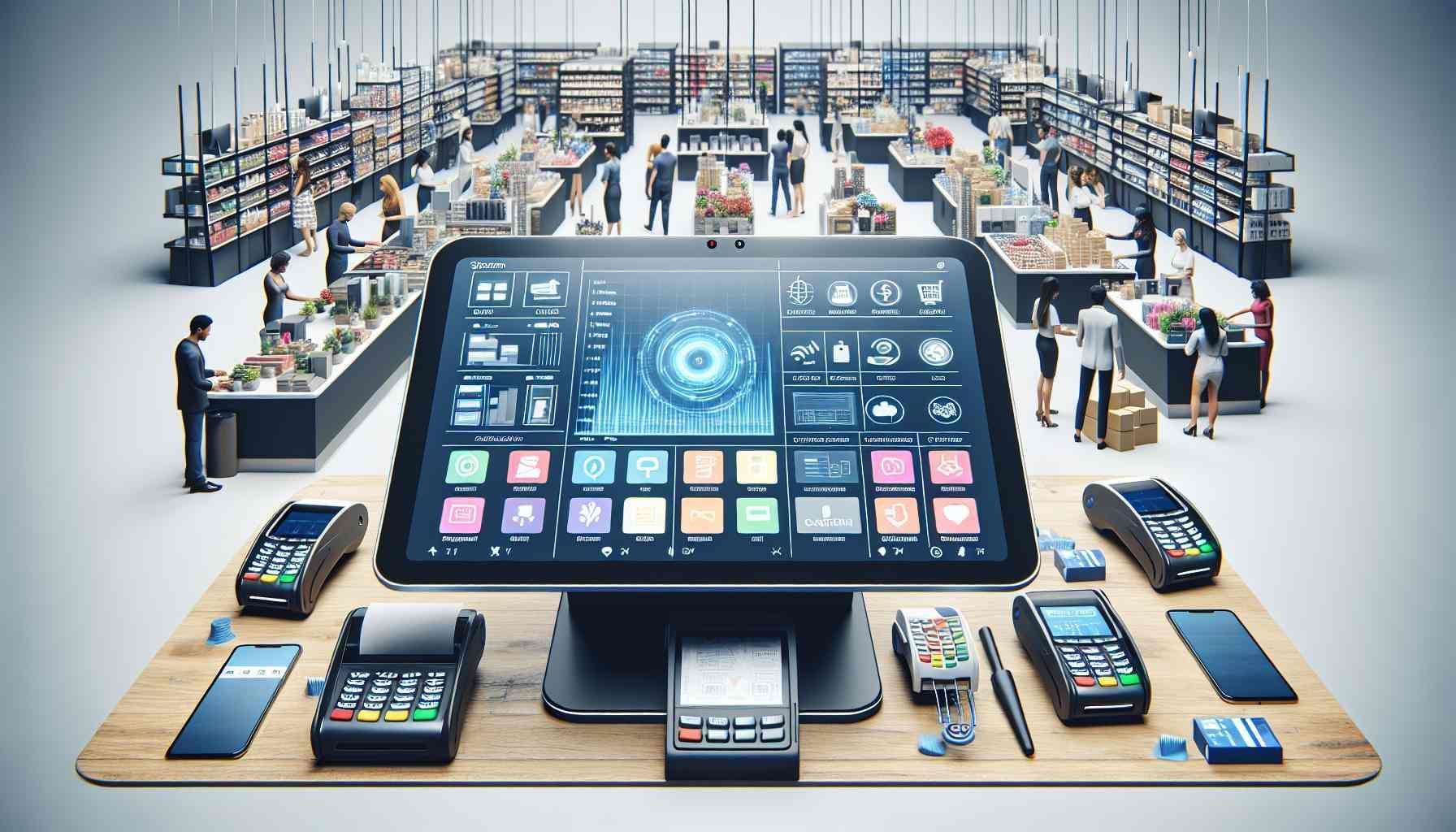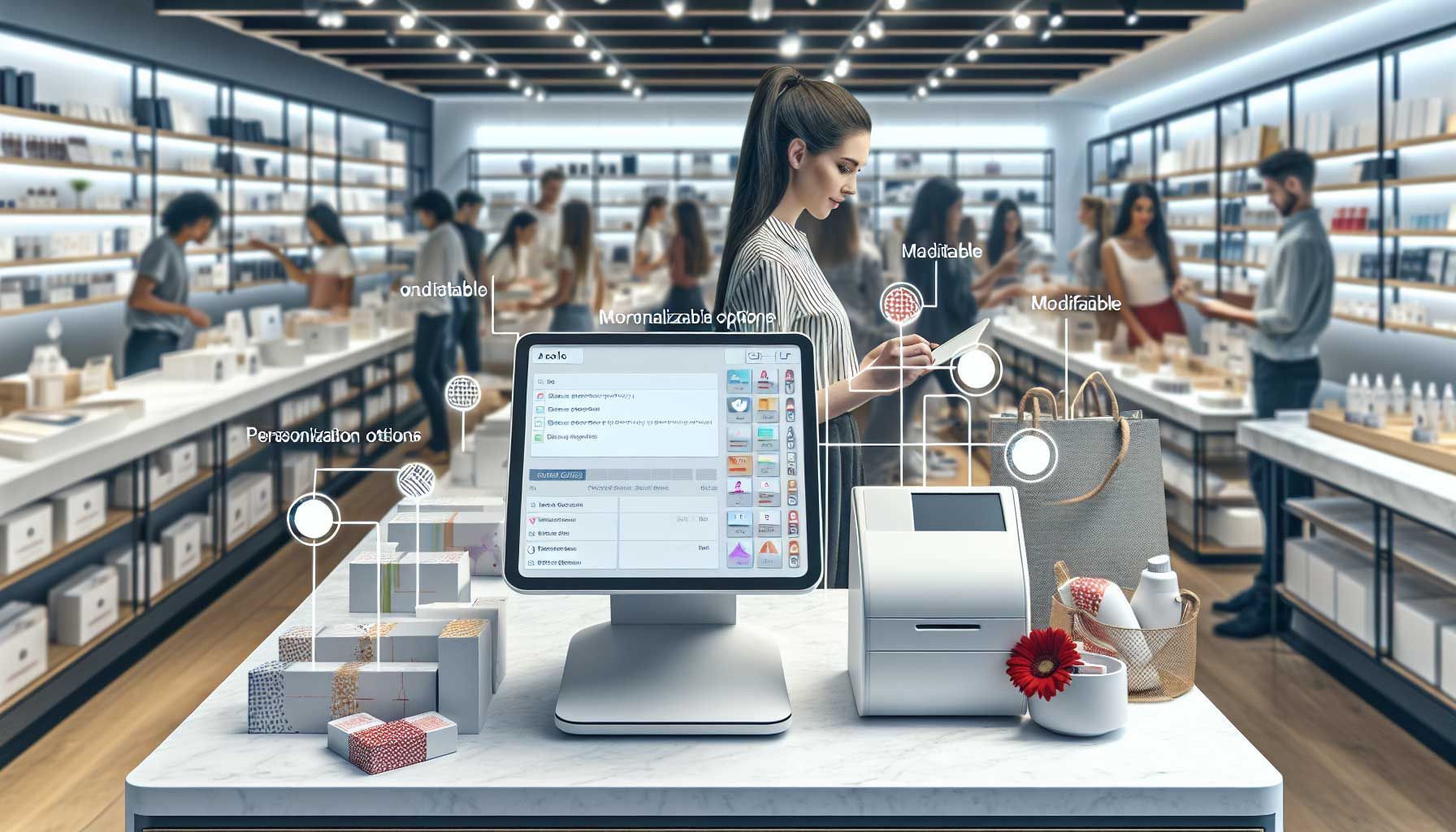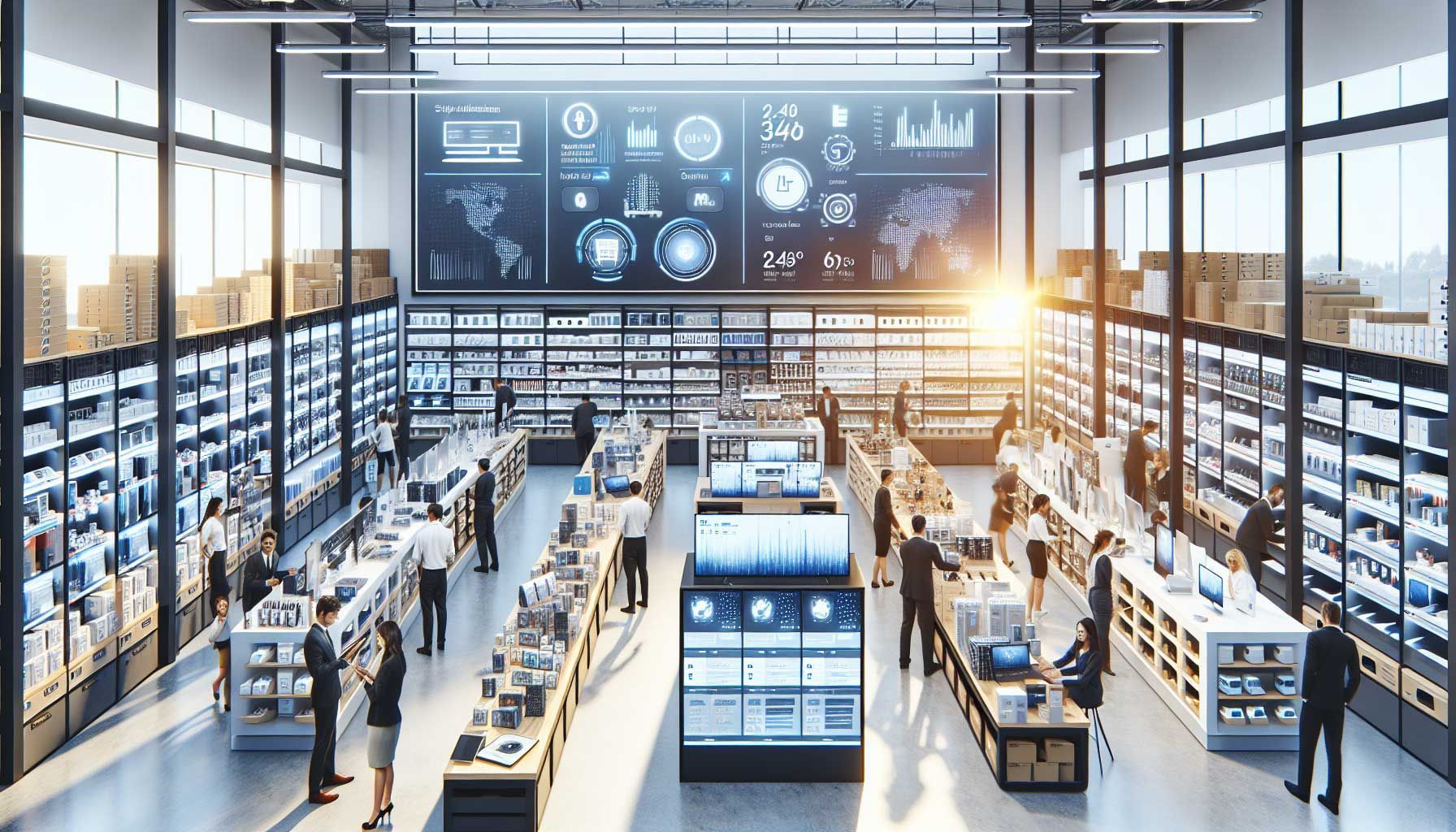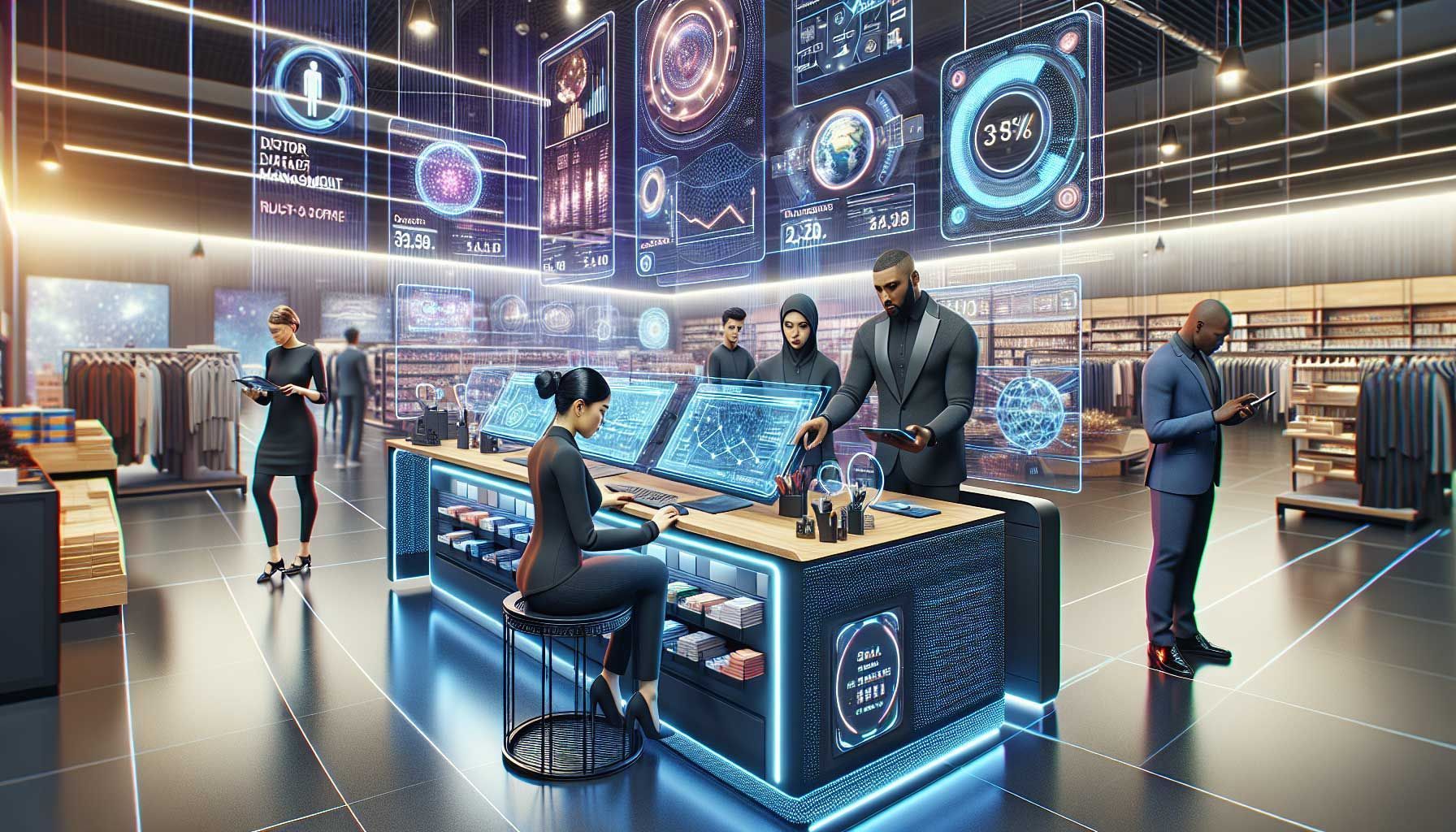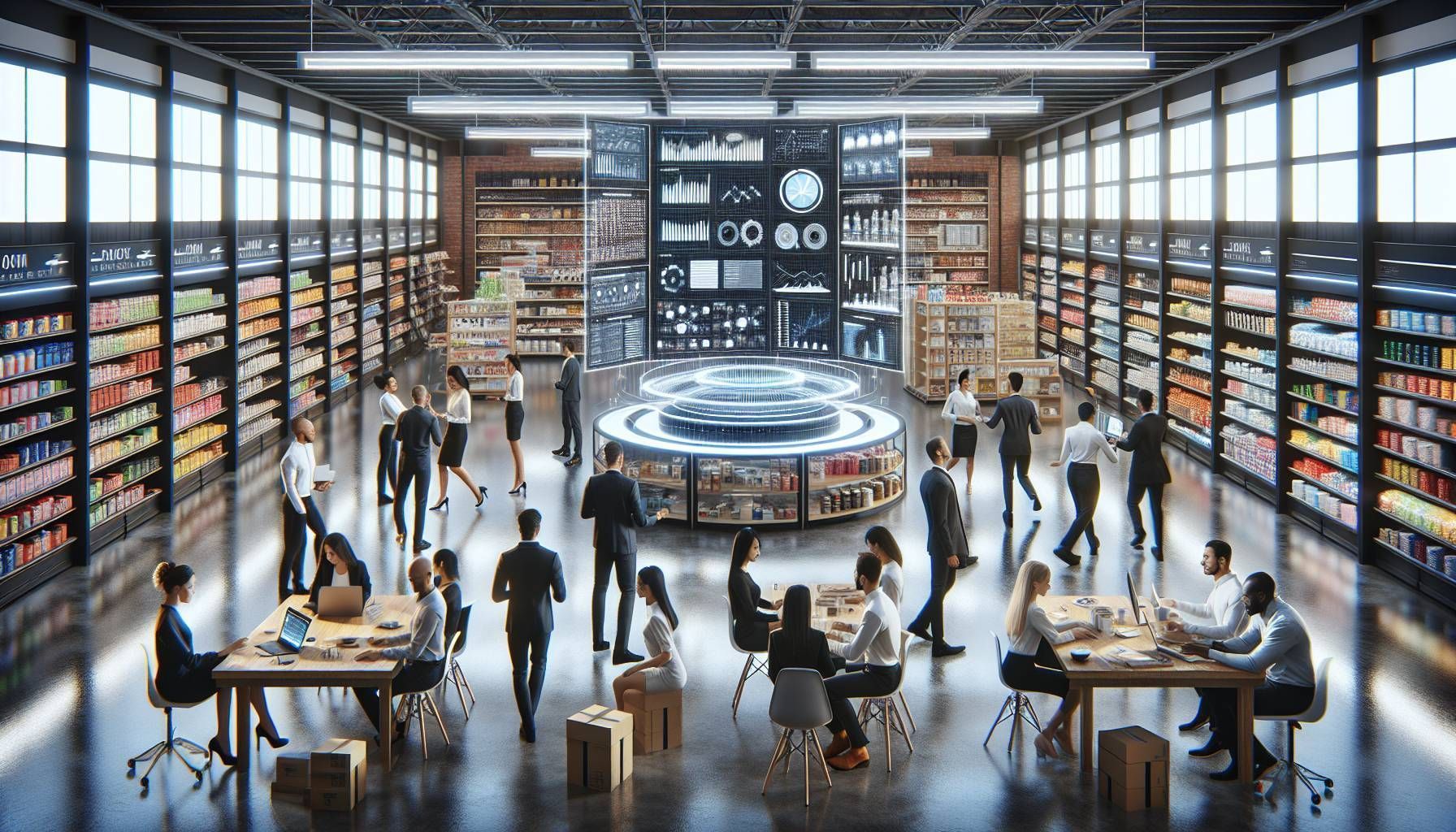How To Improve The Profitability Of Your Retail Store
A complete guide to boost your shop profitability the right way
Increasing sales is one of the most important goals for any retail store. In fact, improving retail store profitability is even more important. Without it, they will not be able to keep their doors open and continue to run their business. There are many ways to do that, but this guide will show you 10 proven strategies to increase your sales and profitability. We want to go beyond proper inventory management, increasing store traffic and offering discounts. How can we encourage your customers to spend more money in your store instead of shopping somewhere else?
- View your business with fresh eyes
- Focus on why customers walk into YOUR shop
- Train your employees
- Direct sales are not the only goal
- Use technology wisely
- Focus on the regular customers
- Choose the right value discipline
- Use Frequent Specials and Discounts to Draw in Customers
- Start promoting your business
- Offer In-Store Events
1. View your business with fresh eyes
Great if your parents started the business in the 1950’s – but if it still looks like it did then you’ve got a problem. A sober or dated interior no longer works in 2018. Especially in the field of luxury goods, the customer expects modern lighting, new carpeting, current colors and trendy displays. Of course, an authentic interior can also be part of the customer experience, but try to add modern elements as well.
Try to walk through the store like a shop-goer. For example, is there someone who likes to look at something at the height of his crotch? No. The best height for a display is somewhere from the navel to the eyes. The best products are at eye level.
Bending over is not pleasant for anyone, especially older consumers. Raise the displays of your products so that your customers can easily interact with them. That is also one of the secrets of a good window display to improve retail store profitability. A few tips:
2. Focus on why your customer walks into YOUR business
Of course your customer wants more information about the color and the size of your product. And you may also be unique in your region with these products. But your customer can also find all that information online. The greatest value your store adds to the purchase process is why your customer walks into your store today. Why didn’t she go to other business? Why didn’t the customer just buy it online? And why did this customer bother to brave traffic (and maybe bad weather) to get inside your retail store? It’s about the feeling that your store ambiance
and products gives her, not about all the technical information around it.
Boosting emotion improves the profitability of the retail shop
Therefore, if you want to sell products to a consumer, it is important to address the subconscious. Why do consumers choose one product and not the other? How do you get regular customers? How do you maximize engagement with your target audience? According to Harvard professor Gerald Zaltman, the answer to these questions is related to the subconscious. How can you use this to your advantage when selling your products?
People are not honest about thoughts and feelings
Contrary to popular belief, consumers are not always as conscious as they think they are. For example, many consumers say they compare different brands and prices with each other before making a purchase. Zaltman’s research, however, shows that this is not the case.
Why are consumers not honest about their thoughts and feelings about a purchase process? An important reason is that they are driven by unconscious stimuli, especially emotions. Emotion is what really influences purchasing behavior, decision making in general. Studies by neuroscientists show that when the human brain is damaged in the field of emotions, decision making is no longer possible.
More than just promoting product features
This is important information because apparently we don’t make decisions as rationally as we think. And that fact must be reflected in our marketing, sales and brand experience.
For example, if we only promote the features of products, we won’t get many results. The human, subconscious side of the decision-making process is skipped.
People are driven by feelings. So if you want the consumer to remember your product or store, they have to feel involved and passionate about the contact that has been made. Good marketers use this concept all the time in emotion-based campaigns to improve retail store profitability. Just think about what actually sells in most marketing campaigns.
Emphasize the feeling or lifestyle behind a product
Luxury items appeal to our feelings of self-worth, acceptance and status. Communication tools stimulate us because we can be in contact with friends, family and an even wider network of people. Sports brands inspire us with images and stories of adventure and winning competitions. For a retail shop these could be emotions of love and relationships, satisfaction and the pleasure of giving. Of course product features are important, but we also have to sell the lifestyle and the feeling behind it. Emphasize the emotional response the consumer will get when he or she uses the product.
Think carefully about the use of words and images
To get the highest emotional response, you have to address the consumer through different senses. Think, for example, of the colors and shape of your logo, the homepage or the product packaging. How do consumers feel about this? Think carefully about word choice and formulate messages carefully. Do they evoke emotions and are they inviting? What do customers experience in the store? The contact they have with the salesman can also determine the image of your store. We like to talk about this in the next chapter.
So, much of what motivates customers is subconscious behavior. But we don’t have to see that as a negative. There is nothing manipulative about helping consumers achieve a desired emotional state. Products and services are designed to meet customer needs and there is always an emotional side to them. Use that to your advantage in your marketing efforts.
3. Train your employees
How passive are your employees? If they show a wait-and-see attitude towards customers, then you need to do something about it if you like to improve retail store profitability. Train them to be as proactive as possible with specific objectives. For example: try to get as many customers as possible to actually try on a certain product.
A really good seller can make all the difference
Brick and mortar shops not only have to compete with other shops but also have to compete with webshops. But that’s exactly where the opportunities lie
. A good salesperson can offer something that an online store does not offer, interpersonal contact, a warm greeting, tailor-made advice. A salesperson can make or break your store. Buying products is emotion and if the experience in the store has been unpleasant, this will damage the reputation of your store. So it is important to employ a really good salesperson.
Enthusiasm is contagious to buy more!
You know it better than anyone. Selling your products is exciting. The adrenaline rises when you talk about the articles and you notice that the enthusiasm is taken over. Enthusiasm is contagious! That enthusiasm is only fueled if your salespeople can also present the right items with conviction. Also, make sure they know what you offer and how it will improve the customer’s life. For example, when your salespeople have to run back and forth to search, your customers’ enthusiasm quickly diminishes.
A good seller is active on the floor
If there are no customers in the business for a while, see what your salespeople are doing. There is plenty to do! How about polishing products? If there is always a cleaning cloth nearby, you make it easy for the shop representative to clean things. Also the showcases and the displays. Is everything still in order? Is all lighting still in order or does a bulb need to be replaced? In this way, your salesperson also remains on the floor and is able to welcome your customers on time. It looks good anyway if your salespeople are not together in a group, but are actively involved in the store. A great atmosphere will indirectly have a good impact on the profitability of your business.
Make it easy for your salespeople to improve profit
Finding a good representative is one thing, but what can you do to support the salesperson? Today’s consumer enters your business well-informed. Your sellers will therefore have to be able to offer that little bit extra. In addition to good social and communication skills and training in that area, your employees also benefit from good product information. Make it easy for your sellers by printing clear labels, so that your articles contain important details. Last but not least, make sure your staff also knows how to make good combinations and has downsell and upsell options ready.
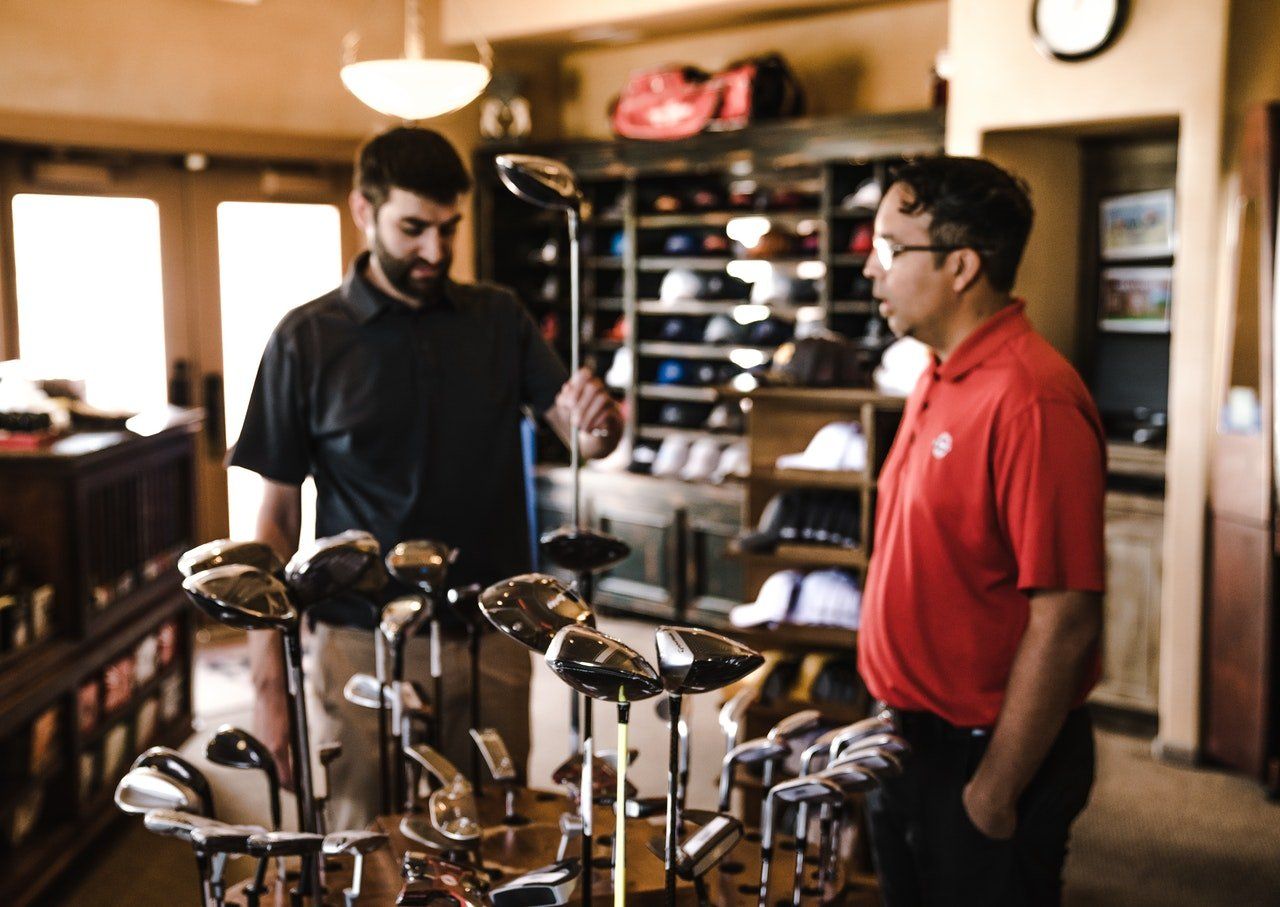
4. Direct sales are not the only goal
Of course we all want to make a good turnover, but customers appreciate it when they are supported, not pressured. Retail shopping should be amusement and there should be no time pressure. Give people space in the way you exhibit, in your approach and decision. Maybe the customer doesn’t buy something today, but comes back a day later to buy it.
But should you just let the customer walk out the door? Certainly not! Many retailers still underestimate collecting customer data to improve retail store profitability.
Information about your customers is the new gold in the data-driven economy.
That does not mean that you are going to sell this information, but that you can let algorithms do the (digital) sales and marketing. A good shopping system is essential for this, but it all started with collecting the data.
Example:
You have an e-mail address from a person who bought a product six months ago. A supplier comes with a new addititonal product. Without you having to do anything about it, your system (and his algorithm) should recommend this product to the person on Social Media and via email. The chance that this product will be bought is now many times greater. Moreover, this immediately yields a profit, while showing the product to everyone costs more money. You will also receive much better recommendations as to which items to stock and which to avoid. In addition, your customers appreciate it when they see relevant messages instead of products they are not interested in.
So collecting customer data is the way for retailers to stay relevant to both the consumer and the supplier. This scenario is much closer than people think. You add real value with service, advice and a personal relationship. In addition, you can do (automatic) marketing with customer data and reduce your stock. So you can easily reduce the conversion costs (cost per sale). In contrast, without customer data, it is hoped that people will find your store again (or you will have to advertise a lot).
Ways to collect more customer data
Of course, there must be a good reason for the customer to share his data. One of the easiest ways is to ask if the customer would like to receive the receipt by email
. Here are several ways to collect more customer data.
5 tips for collecting customer information
I will write a separate blogpost about this subject.
5. Use technology wisely
Employees should approach customers with sincerity and make a positive impression. They should really appreciate the customer’s excitement about finding that perfect product. It’s great to have an iPad with product videos available. But it should never take the place of human contact in a physical store. Small screens draw a customer’s attention down and it becomes more difficult to keep in touch with the person.
In short, the human factor is really the most important added value of the physical store compared to online shops. Today’s customer is looking for a heartwarming moment in an increasingly digital world. Make sure you attract new customers, but also keep customers.
Automation and making processes more effective
A lot of store owners are now trying to use all the latest technologies from hardware to software that can help them work more efficiently. That is a good thing, but don’t forget that a buying and using a specific system does not immediately have to deliver the desired result. So keep these store automation tips
in mind.
6. Focus on the regular customers
According to Investopedia
, 20% of customers account for 80% of sales! It is therefore important to retain your existing customers. In addition to marketing activities aimed at attracting new customers, it is important not to lose sight of the existing ones. But how do you do that?
Provide excellent service
First of all, your customers must of course be satisfied. Not just a little bit, but very satisfied.
You can influence this yourself. Has your business built up a good name and do you offer a competitive price? Of course, supplying high-quality products and services is of great importance. But how do you deal with repairs and complaints? This is where you can really make a difference. But that is not enough to really bind customers to you.
Why do regular customers want to remain customers?
Customers like to come back if they benefit financially from being a specific customer with you. A loyalty card or regularly recurring discounts can help. Make sure they enjoy certain advantages over new customers. Of course, social bonding is also important. How do you communicate with your customers? Quick responses on social media indicate that you are engaged with your customers. Good service and a friendly policy in the store where the customer always gets the benefit of the doubt is also essential.
Customized service for regular customers
Another way to keep in touch with your customers requires a lot of knowledge. How well do you know your regular customers? This information is crucial to be able to draw attention to customized products and services. Sending an e-mail about a new collection of great men’s products will not have much effect if it is sent to an older woman who likes to buy a different kind of product from you. So make sure you know your customers well, so that you can bring products to the attention that perfectly match the customer’s expectation.
7. Choose the right value discipline
You may not have heard of it, but professors M. Treacy and F. Wiersema
created a model to find your unique value as a company. You can focus on ‘Customer Intimacy’ (best total solution), ‘Product leadership’ (best product) or ‘Operational excellence’ (best total cost). If you focus on all three, you are stuck in the middle and it will not be a success.
I think this is also extremely important for the profitability of your retail business. Most of the time as a retail store you can’t offer the lowest prices. So operational excellence should not be your main focus. With customization you may be able to offer the best product, but otherwise there is only one option left and that is focus on a total solution (customer intimacy).
What services can you sell with the product? Perhaps you can set up a collaboration with another company for this. Or are there opportunities to offer inspiration around the use of your products?
8. Use Frequent Specials and Discounts to Draw in Customers
Special deals and offers are advantageous for buyers and sellers. They provide a great reason for customers to return, and at the same time, they can help you better manage your inventory.
From a shopper’s perspective, such deals entice them to come back to your store and webshop more often. And from a business perspective, it can be a meaningful way to increase sales in the long run because there will be regular customers.
At first you may think that with a promotion the profitability goes down slightly because you are giving away margin. But in this way you keep the target group involved and give them the feeling that they are a special customer. So which products are interesting for a promotion?
Referral and loyalty programs are also a great option to bind people to your store.
9. Start promoting your business
In order to do this, we need to first think about the digital strategy for our target customer. We added a free template
at this blogpost. Keep the interests, goals of your customers and why they should visit your store in mind to sharpen your message.
Then invite them on social media platforms like Instagram, Tiktok and Facebook to keep posted. More importantly, ask them to join your mailing list. Social Media platforms come and go, but your mailing list can be molded into a stable (free) form of promotion. Start sending out newsletters
with updates of new items on offer.
In addition to digital promotion to boost profitability of your retail store, use window displays that catch the eye of passing-by customers. It is also interesting to distribute a brochure in the neighborhood around the store once a year. This can be an interesting promotion, especially in the month before the holidays.
10. Can in-store events impact the profitability of a retail store
Retail stores are losing market share to e-commerce. They need to up their game to attract customers and make them come back. One way is through adding in-store events. They can make the ambiance
more lively and give customers a unique experience that they can’t get on the web. This will also help retailers stay competitive with each other with special deals and offers that cannot be replicated online.
In-store events are becoming an important part of most retail stores’ marketing strategy. It is the perfect way for retailers to engage with their audience in real time, giving them an opportunity for a more personal touch, which boosts customer satisfaction and retention rates as well as generating business opportunities for both parties with referrals or collaboration resulting from these events. Therefore, in-store events are a great way to improve the profitability of your retail store. So roll out the red carpet!

Conclusion to improve retail store profitability in a practical way
Above we’ve highlighted 10 different starting points for increasing your store’s profitability. After research and drafting, I noticed that most of the points relate to the target group. By knowing more precisely what and which customer needs there are, your marketing effort become cheaper and your profitability can increase. The concept can thus be fine-tuned for the complete experience with the right starting point for employee training, store design, the range and the marketing message. In short, the complete strategy
depends on the wishes of the customer and the value you can offer as a retailer.

We look forward to share the best strategies with you.
Thank you!

Bring your shop to the next level
Hi, I'm George and I like retail and technology. Therefore, my passion here at Retailgear.com is to provide you with reliable information to automate and digitize your store. You can find out what we can do for your industry through our menu. Also, feel free to check out this updated list of retail tools.
Get inspiration in your inbox to get more sales and store visitors with less effort.

